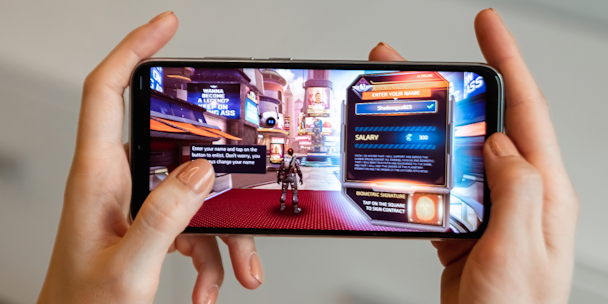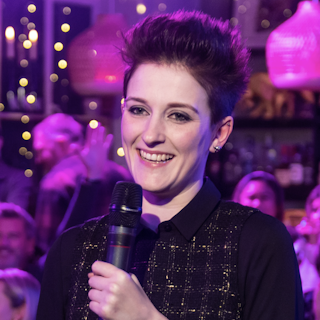Busting the myths and falsehoods behind creative programmatic and mobile gaming
There’s an overabundance of misconceptions and programmatic falsehoods, the ecosystem can be pretty confusing, already littered with so many acronyms, vendors, and platforms.

Busting the myths and falsehoods behind creative programmatic and mobile gaming
L’Oreal, AdColony and Essence gathered at The Drum’s Programmatic Punch APAC to pull apart the idea that programmatic can’t be creative and how gaming is a boys-only club.
Navigating the boy’s 'gaming' club
There is an age-old misconception around gamers being a male majority and this has carried through to mobile gaming. However, these days everyone plays mobile games. Unlike PC and console games, the male/female ratio is even for mobile.
Across Asia Pacific, there are more than one billion gamers on a daily basis. Looking at most markets in the region, there is a 60-80% reach against consumers, says Tom Simpson, vice president, APAC, AdColony. He adds: “You've got consumers of all flavors, you've got mass reach, you've got a niche. And in many markets in Asia Pacific, there are more female gamers than there are males. It's really just people. It's just a channel. It's a neutral environment.”
Many brands aren’t taking advantage of this space. For L’Oreal, gaming has been an entirely new concept. “When we think of beauty and specifically luxury beauty, there’s a certain sense of premium-ness that we attached to it,” says Sheenum Kumar, marketing manager, luxury division, L’Oréal. “And there's a certain sense of, do I even want my brand in the same space as a gaming audience? Is there even the right relevant audience for me in gaming?
“When you think of beauty makeup, you're thinking female audiences anywhere between 25 to 45. But if we want to continue recruiting new customers and acquiring new leads, where do we find these audiences and how do we differentiate them from your go-to platforms such as Facebook, Instagram and Twitter?
The core market for mobile games like Candy Crush is women aged 35 and over.
However, beauty brands or any brand shouldn’t just jump into gaming because it's a cool thing to do, says Vincent Niou, head of programmatic, APAC, Essence. “You have to do your homework and make sure it fits.
“We’re talking about the myth of gaming is just for boys, that's categorically false. GWI had a report saying 80% of females on the internet have played games on some sort of device. There's a stat from Dentsu saying that female gamers spend more time playing more mobile app games than males.”
He added that brands should approach mobile gaming like any other category. It may be a niche channel in some respects but there are a lot of variables within it; where people play games, how they play them, are they willing to pay for the games etc.
“It's really important for any brand beauty included to look into various nuances of gaming to figure out what cross-section would work best or would be a fit for your brand.”
Concluding on the gaming myth, Simpson says “It’s not really thinking about gaming as in advertising at gaming. You've got a bunch of consumers who have all sorts of different behaviours and you can track them using multiple different data points. And how do you segment that? It's about gaming consumers. It's just about people.”
You can’t be programmatically creative
Programmatic isn't creative, you can't be creative with programmatic. So say many within in the industry. But that clearly isn’t the case according to the panelists.
Compared to when she joined L’Oréal in 2015, Kumar says that consumers are getting smarter and becoming bored more quickly. “We're getting less attentive. The problem is that it becomes such a dynamic and rapid environment that I don't think brands and clients today have the resources to feed the need of an ever increasingly saturated customer.
“Consumers take less than a quarter of a second to recognize where they want to look at an ad or not. And so, you've got less than a quarter of a second to appeal to them against 20 of the brands selling the same product, same benefits, same key messaging and keywords.”
Niou adds that there are plenty of studies that indicate that the single most important driver for any campaign's success is creativity, but a lot of times it's an afterthought and it shouldn't be that way.
“There needs to be more awareness and education around what programmatic technology and ad tech/MarTech technology can enable from an ad creation standpoint,” explains Niou. “Programmatic creative is not just dynamic creative. It's not just creative that follows users around the internet with a really basic template.
“It's still creative at the end of the day. And creative still requires a level of artistry. But in order to hit the point when artistry can be applied, those on both the media and creative side need to at least have a fundamental understanding of how the technology works. Overall that's lacking in the industry at this point.”
The huge challenges around creative and programmatic is a classic case of what’s measured and managed, adds Simpson. “In programmatic, we have access to lakes and oceans of data about what's going on and that can be confusing and difficult to difficult to handle.”
Creative artistry can be fueled by data but it’s tempting for many to dive straight into the vast amounts available, spending ever-increasing amounts of time wrangling that data.
“There’s an opportunity to connect some of that digital data with the strategic/creative side by pulling some of that data, getting the creative agency to work with it, turning it from a tactical activity into that strategic consumer insight which you can use to fuel creative artistry.”
Kumar adds that advertisers have forgotten how to have fun. It’s all about data, insights, decisions, and making strategies now. “You become so obsessed with does this hit a particular KPI and all these CTR/VTR etc,” she explains.
“It's not humanly possible to get these numbers and at some point, you almost wonder, do they make sense? At L’Oréal, we spend copious amounts of time trying to crack the right permutation of this creative multiplied by these keywords, multiply by this audience segmentation by this platform to give me X, Y, Z.”
It’s the simple things really, like looking at what is trending with your audience. For Kiehl's, a quirky cult beauty brand from New York, Kumar explains that on their Instagram, they posted funny, gimmicky assets of avocados to launch a new face mask. With zero paid media behind it, it was the highest engagement they’d ever had.
“We had our retail team asking us, what we did as they had a lot of people coming up and asking for samples for this product. We just put a really funny avocado dancing in our Instagram feed and that was it. Sometimes just having a bit of fun with it and not taking it too seriously might just be a way to distress some of these marketers.”
AdColony was a partner for Programmatic Punch APAC. Register here for 2020.


